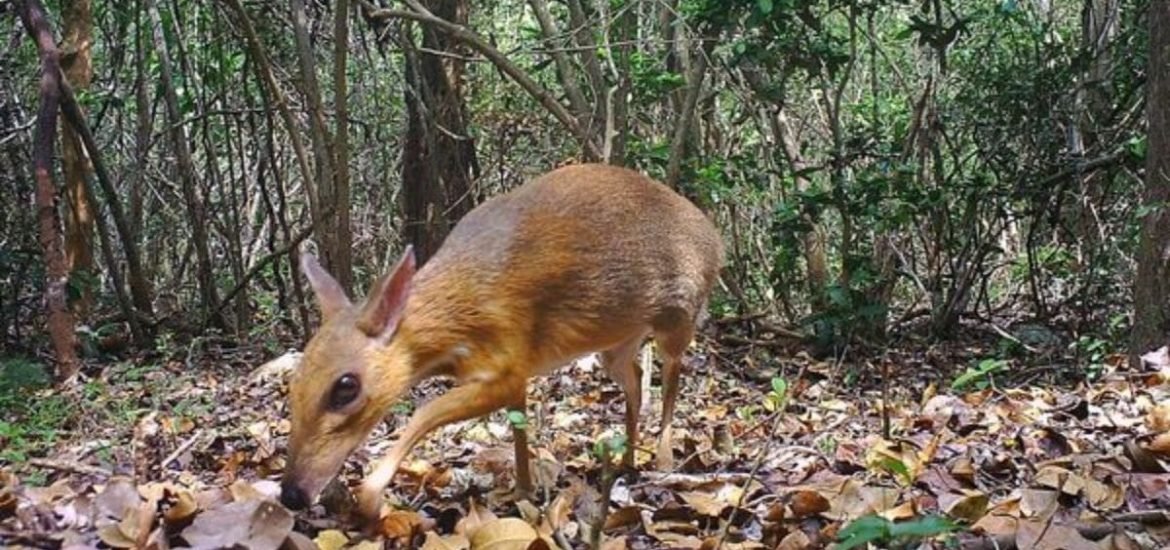
In a time when mass extinctions are on the rise, news of the ‘rediscovered’ deer-like silver-backed chevrotain Tragulus versicolor is much-welcomed and ‘provides a rare second chance for biodiversity conservation’, write the authors of the paper reporting new evidence of the silver-backed chevrotain published on 11 November in Nature Ecology & Evolution (1).
The silver-backed chevrotain is around the size of a rabbit with a notable silver sheen on its rump and two small fangs. Until now, the so-called Vietnam mouse-deer was considered extinct by scientists — thought to have been poached to extinction in the 1990s. Although, the Red List of Threatened Species maintained by the International Union for Conservation of Nature reports its status as ‘data deficient’. The last documented evidence of the silver-backed chevrotain was of one killed by a hunter and donated to scientists in 1990. And in 1990, only five specimens in total had ever been collected.
To search for new evidence of the creature’s continued existence, the international team of scientists first interviewed local villagers and forest rangers who reported sightings of silver-backed chevrotains. Making sure to distinguish between this variety and the more common lesser mouse-deer — there 10 known species of chevrotain in the world, primarily from Asia.
Indeed, many people living near the forests of Nha Trang were aware of the existence of this shy and solitary creature. Nonetheless, the species was considered ‘lost to science’ since there had not been any evidence documented by any scientist in nearly three decades.
Senior authors Andrew Tilker, a conservationist at the Global Wildlife Conservation, a non-governmental organization based in Austin, Texas and doctoral student with the Leibniz Institute for Zoo and Wildlife Research in Germany, told Nature, “To these local people our camera-trap evidence that the silver-backed chevrotain survives in Vietnam is not new,” says Tilker. “But to the wider scientific community, we are comfortable saying that our findings constitute a rediscovery”.
Based on the accounts provided by local people, the researchers set up camera traps at several different locations near the city of Nha Trang in Vietnam and managed to capture more than 2000 photographs of the elusive species between late 2017 and mid-2018. Incredibly, the first three traps resulted in 275 photographs over five months. And another 29 cameras recorded an additional 1,881 photographs over the same timeframe.
“We had no idea what to expect, said associate conservation scientist An Nguyen at GWC who led the expedition. “I was surprised and overjoyed when we checked the camera traps and saw photographs of a chevrotain with silver flanks”.
Nguyen adds, “For so long this species has seemingly only existed as part of our imagination. Discovering that it is, indeed, still out there, is the first step in ensuring we don’t lose it again, and we’re moving quickly now to figure out how best to protect it.”
The researchers hope this new evidence will lead to better protection. Moreover, the same method could be used to locate other ‘lost’ species.
(1) Nguyen, A. et al. Camera-trap evidence that the silver-backed chevrotain Tragulus versicolor remains in the wild in Vietnam. Nature (2019). DOI: 10.1038/s41559-019-1027-7
Photo: Southern Institute of Ecology/Global Wildlife Conservation/Liebnitz Institute for Zoo and Wildlife Research/NCNP